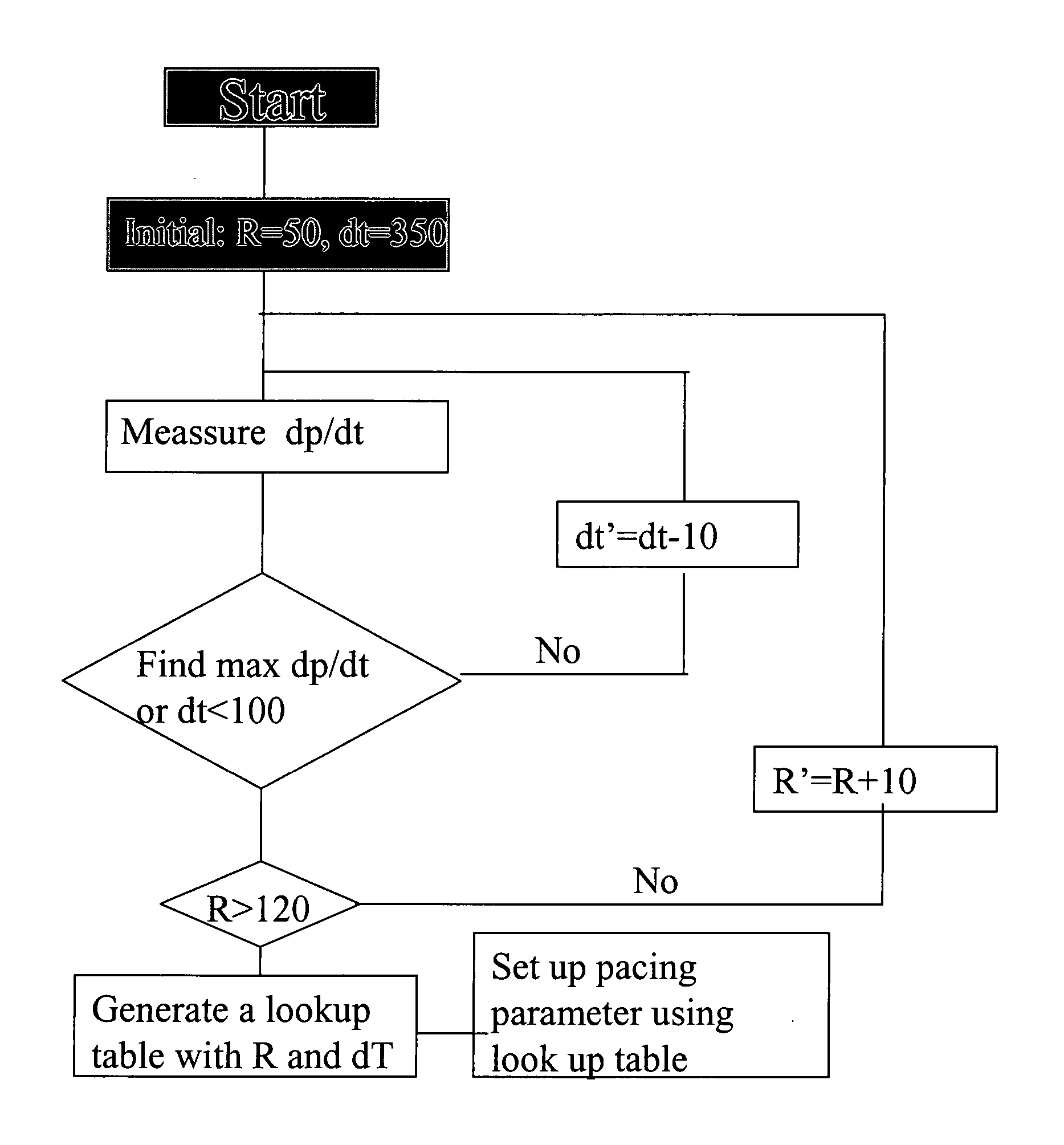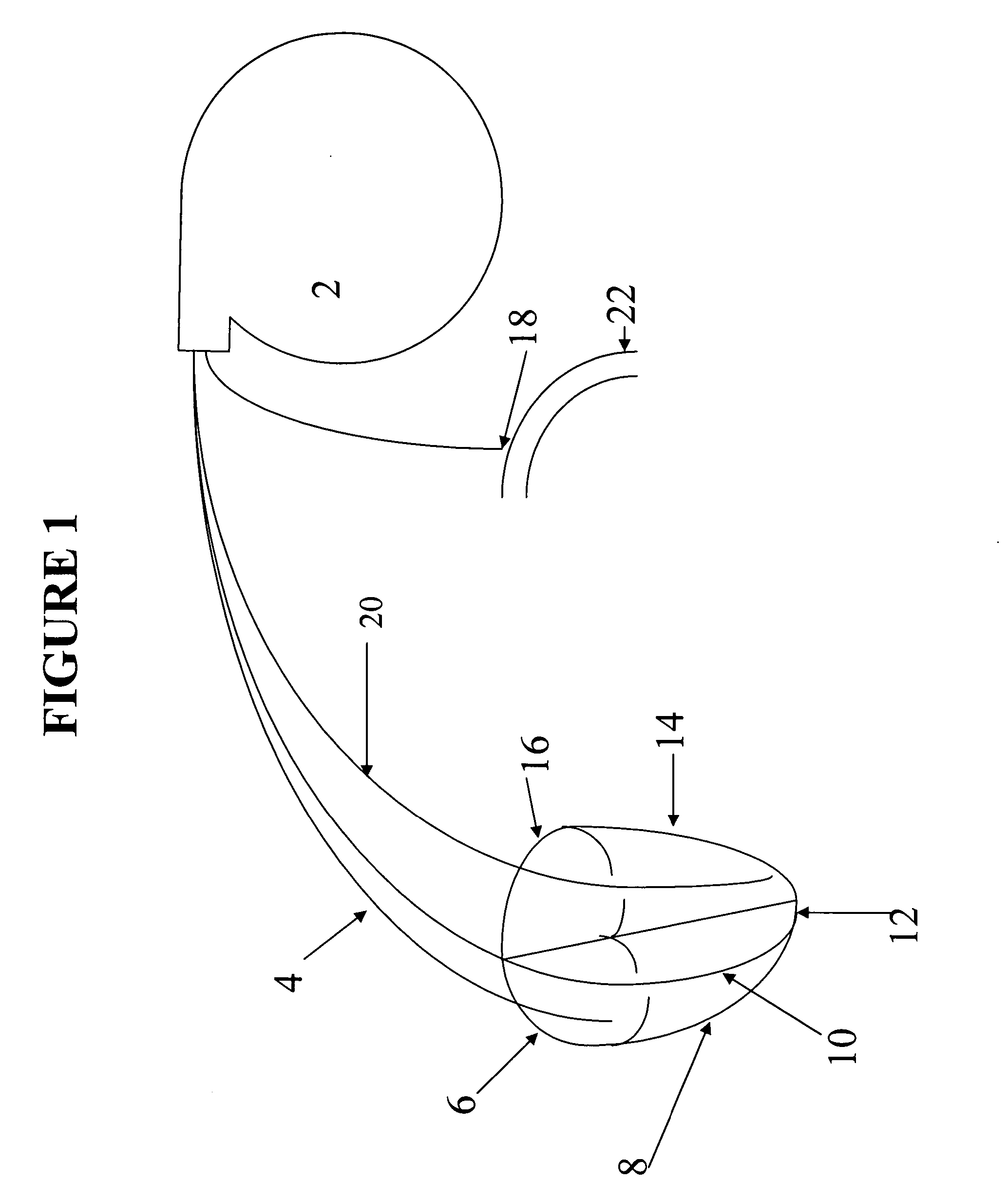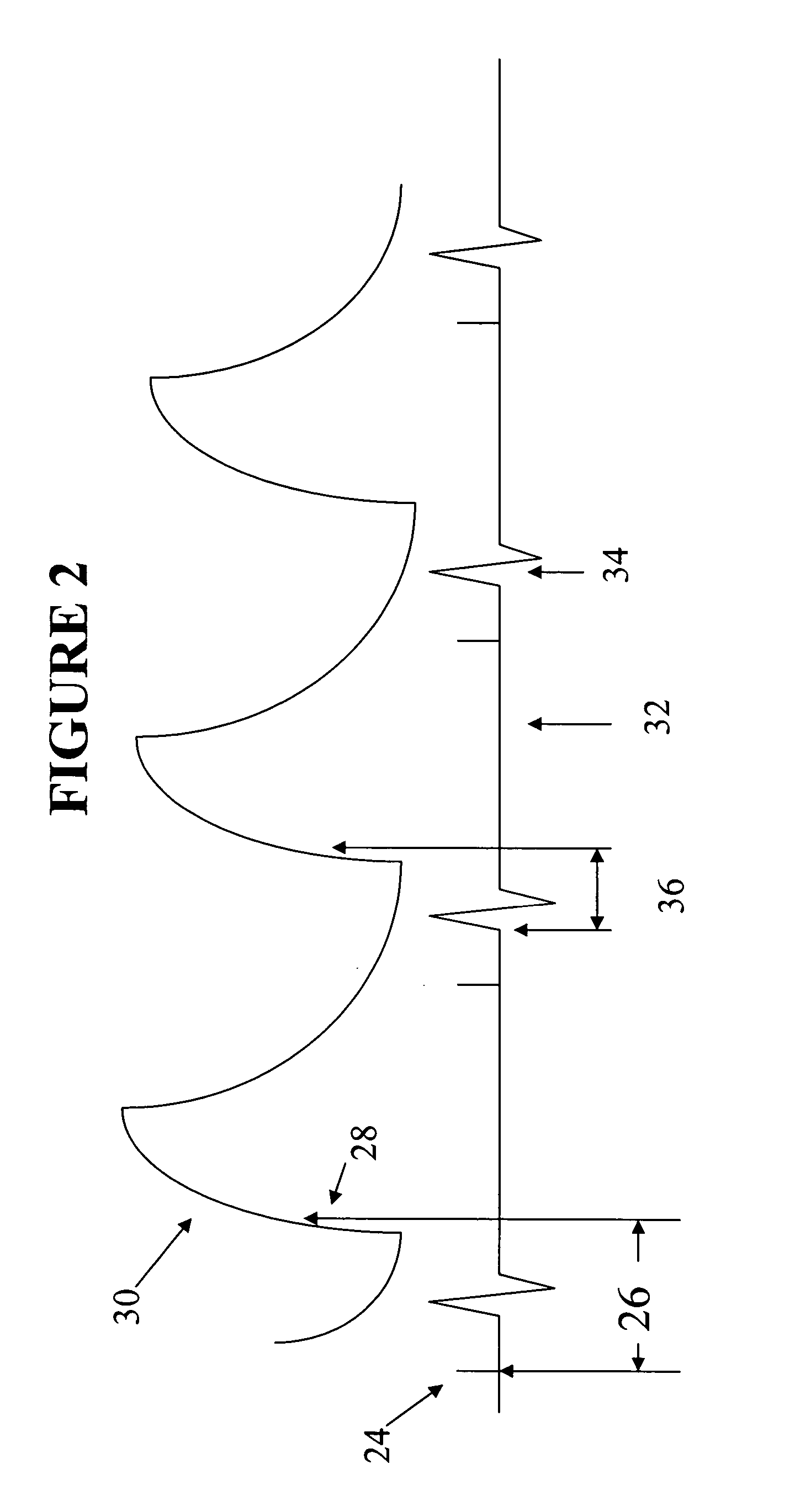[0003] If intracardiac pressure can be measured to guide the adjustment of the pacing setting, it will optimize pacing setting by finding optimal pacing location and timing. Therefore, resynchronization of the contraction of myocardium and interaction between different cardiac chambers will optimize resulting in improvement of function the heart without increase working load on the heart. Resynchronization may also shorten
systole at given
heart rate, which will in turn prolong
diastole. This will improve
perfusion of the myocardium since the
perfusion of the myocardium mostly occurs during
diastole.
[0004] The current invention consists of pacemaker and a pacemaker
catheter, or catheters. The pacemaker
catheter contains pacing leads and a sensor in its' distal end of pacing
catheter for sensing intracardiac pressure or a separate catheter for sensing
arterial blood pressure. Intracardiac pressure measured in a real time manner by the sensor is fed back to pacemaker and used to help position the pacing leads in the
cardiac chamber or chambers and to optimize the pacing setting, which result in optimization of resynchronization of myocardium and interaction among different cardiac chambers. Adjustment of pacing setting of the pacemaker can be achieved manually by a care provider or automatically by the pacemaker containing a program for this purpose. The pacemaker can sense the intracardiac pressure in a real time manner and adjust pacing setting to optimize cardiac performance. This can be done at different
heart rate. It can also be performed automatically at certain time interval specified by care provider. This will further optimize resynchronization of myocardium and interaction among different cardiac chambers and, therefore, improve the function of the heart. This adjustment can be achieved manually by care provider using an interrogator. The pacemaker has capability to store information about pacing, intracardiac pressure and any adjustment the data can be retrieved for further analysis.
[0005] A pacing lead inserted into left
ventricle raises a concern that it may cause
thrombosis or infection. Alternatively, a sensor may used to sense
systemic blood pressure or rate of expansion of the
artery.
Time difference between QRS complex from intracardiac electrocardiogram or
ventricular pacing signal and maximal dp / dt of
arterial blood pressure or maximal rate of expansion the
artery during
cardiac cycle may be used as a segregate dp / dt intracardiac pressure since shorter the
time difference between QRS complex or
ventricular pacing signal and dp / dt or faster the rate of expansion of the
artery, the faster increase in intraventricular pressure when heart rate and
contractility of the ventricle remain unchanged, meaning the ventricle needs less time to built up pressure to open the
aortic valve against diastolic
arterial blood pressure. Since the heart is paced at programmed rate and other factors such as arterial
blood pressure,
peripheral resistance and circulation volume will remain unchanged. The
time difference between maximal dp / dt of arterial pressure or the fastest
expansion rate of the artery and QRS complex or
ventricular pacing signal will depends on dp / dt of intraventricular pressure during early
diastole. The higher the maximal intraventicular dp / dt, the better the performance of the ventricle. When the ventricle is paced, A-V
delay and right / left ventricular synchronization can be optimized based on
time difference between intracardiac electrocardiogram or ventricular pacing signal and maximal dp / dt of the arterial
blood pressure, or simply based on maximal dp / dt of the arterial
blood pressure or combination of both. A sensor can be used to sense arterial blood pressure at the subclavian or axillary artery, which can be approached during
insertion of the pacemaker with slight modification of the procedure of the
insertion of the pacemaker. Pacing location, A-V
delay, and synchronization between left and
right ventricles will be adjusted based on optimal timing difference between the QRS complex of intracardiac electrocardiogram and / or maximal dp / dt of
systemic blood pressure by the sensor(s) placed on the subclavical artery or other arteries. The pacemaker can sense the arterial blood pressure in a real time manner and adjust pacing setting to optimize cardiac performance. This can be done at different heart rate different
workload of the heart. It can also be performed automatically at certain time interval specified by care provider. This will further optimize resynchronization of myocardium and interaction among different cardiac chambers and, therefore, improve the function of the heart. This adjustment can be achieved manually by care provider using an interrogator. The pacemaker has capability to store information about pacing, arterial pressure, intracardiac electrocardiogram and any adjustment. The data can be retrieved for further analysis. To achieve this goal, a separate sensing catheter will connect a sensor from the artery(s) to the pacemaker. If biventricular pacing is used, sensing capability for intracardiac electrocardiogram and pressure of the left ventricular lead may be eliminated. It will decrease size of the catheter, which may make it
safer and easier, especially when being introduced into cardiac venous
system.
 Login to View More
Login to View More  Login to View More
Login to View More 


